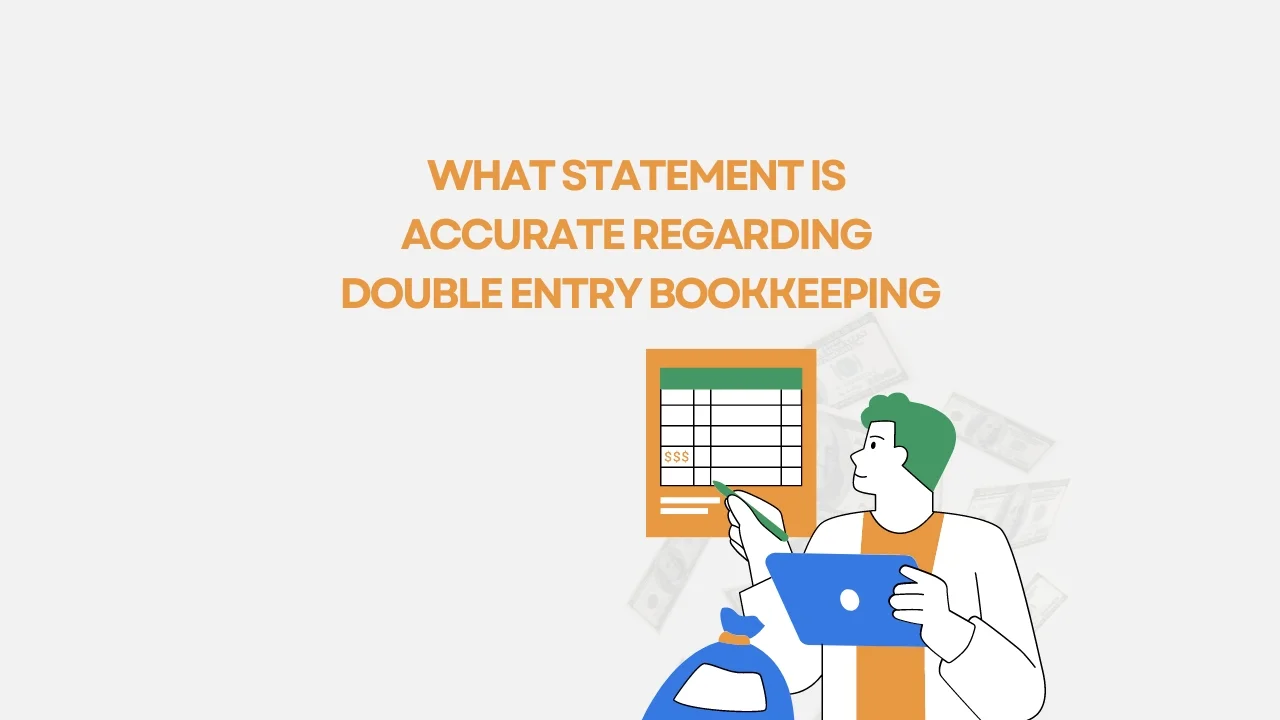In the world of finance and accounting, precision matters. In the modern age, most businesses and organizations follow double entry accounting systems for maintaining accurate and organized financial records. Double entry bookkeeping stands as the cornerstone of this financial record-keeping system. So when we generate financial statements such as profit and loss account and balance sheet; how do we make sure the statement is accurate? To make sure the first fact check is to confirm that the accounting equation is correct.
This article dives into exploring the concept of the accounting equation and what statement is accurate regarding double-entry bookkeeping. We’ll then offer practical tips to help you master this powerful accounting method.
Table of Contents
Understanding the Accounting Equation
Before delving into double-entry bookkeeping, it’s crucial to grasp the fundamental concept of the accounting equation. The accounting equation is the underlying premise of financial accounting and would give so much insight into a company’s financial status or situation at any given time. It states:
Assets = Liabilities + Owner’s Equity
- Assets: These represent the company’s resources, such as cash, inventory, equipment, and buildings.
- Liabilities: These are the company’s financial obligations, such as loans payable, accounts payable, and taxes payable.
- Owner’s Equity: This reflects the owner’s (or shareholders’) investment in the company. It’s calculated as the difference between assets and liabilities.
The accounting equation emphasizes a fundamental principle: a company’s total assets must always equal the sum of its liabilities and owner’s equity. This balance ensures the company maintains accurate financial records.
The Most Accurate Statement Regarding Double-Entry Bookkeeping
Now, let’s address the core question: what is the most accurate statement regarding double-entry bookkeeping? Here it is:
With double-entry accounting, each financial transaction requires recording in at least two separate accounts, with opposite but equal monetary values.
This seemingly complex statement unlocks the power of double-entry bookkeeping. Every financial transaction has two sides: an “origin” and a “destination” of money. Double-entry accounting ensures both are captured, maintaining the balance reflected in the accounting equation.
Let us break down this statement further:
- Recording in at least two separate accounts: Each transaction must affect at least two accounts within the accounting system. They may include any accounts of these types: assets, liabilities, owner’s equity, revenue, or expenses.
- Opposite but equal monetary values: It means recording the economic value of a transaction with opposite signs in two different accounts. In both entries, this ensures consistency in terms of the total value of the transaction.
For example, assume that a business purchases office supplies costing $500 in cash. Here is what the double entry bookkeeping for this transaction would be:
- Debit: It debits the asset account of Office Supplies by $500 since the company’s office supplies have increased.
- Credit: It also credits the Cash for $500, as it decreases the company’s available cash for buying.
In this example, for every account that is increased by an asset account – office supplies – an offsetting asset account, cash decreased by the same amount ($500). The net result is no change to the company’s total assets, thus upholding balance in the accounting equation.
Double-Entry Bookkeeping Tips
However, double-entry bookkeeping can initially seem complex, especially for businesses unfamiliar with accounting principles. Here are some tips for beginners:
- Understand Account Types: Familiarize yourself with the different types of accounts (assets, liabilities, owner’s equity, revenue, and expense). Understanding the nature of each account type allows you to categorize transactions accurately.
- Understand Debits and Credits: Debits and credits represent the two sides of a financial transaction. Debits generally represent an increase in asset and expense accounts, while decreases are reflected with a credit. Conversely, credits represent increases in liabilities and owner’s equity accounts, with decreases recorded as debits. Learning the “rules” of debits and credits is key to recording transactions correctly.
- Utilize the Accounting Equation: The accounting equation serves as a valuable tool for verifying the accuracy of your double-entry bookkeeping system. After recording a transaction in separate accounts, ensure the total debits still equal the total credits. This helps maintain the balance in your financial records.
- Utilize Accounting Software: Many user-friendly accounting software programs can automate double-entry bookkeeping, simplifying the process. Choose accounting software that fits your business and set up a clear chart of accounts to track your finances effectively.
- Seek Professional Help: Still navigating double-entry bookkeeping feels overwhelming, consider consulting a qualified accountant for guidance in setting up and maintaining your double-entry bookkeeping system.
Final Thoughts
In conclusion, double entry bookkeeping serves as the foundation for robust financial record-keeping. By understanding the core concepts of debits, credits, and the accounting equation, businesses can leverage this powerful system to gain valuable insights into their financial health, ensure accuracy, and ultimately achieve their financial goals. Remember, with double-entry accounting, every transaction requires a balancing counterpart, keeping your financial picture accurate and your business on track for success.


Leave a Reply